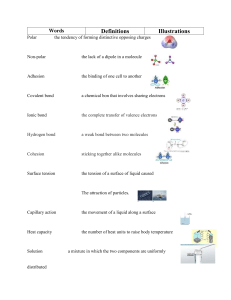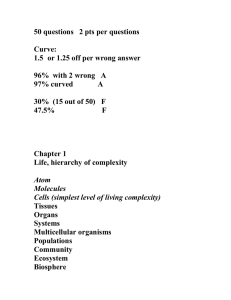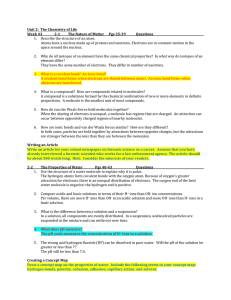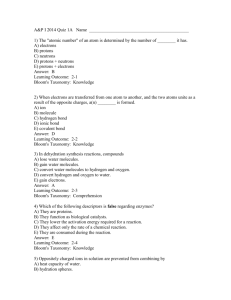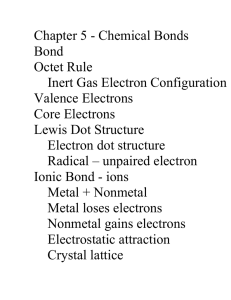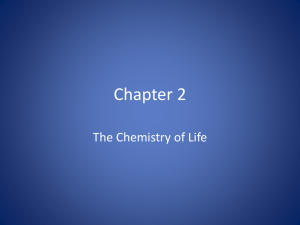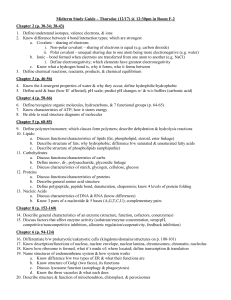Carbon, Hydrogen, Oxygen, Nitrogen = 96% of you is made up of
advertisement
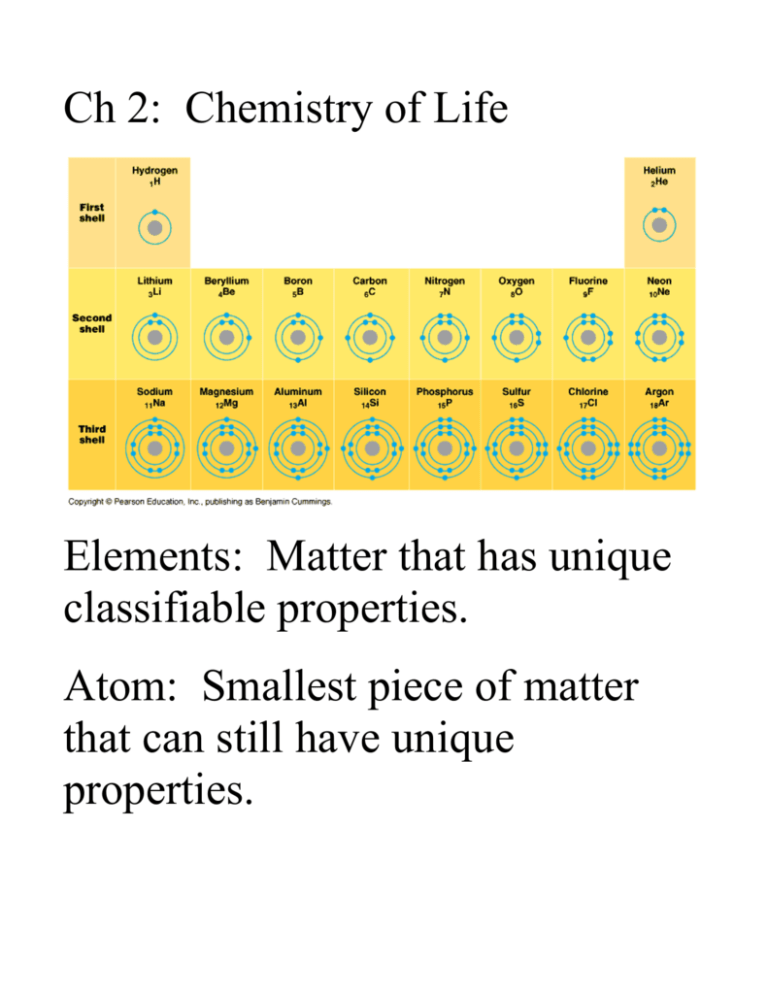
Ch 2: Chemistry of Life Elements: Matter that has unique classifiable properties. Atom: Smallest piece of matter that can still have unique properties. Molecules: Combinations of atoms. Carbon, Hydrogen, Oxygen, Nitrogen = 96.5% of you is made up of CHON. C. HOPKINS CaFe Mg with NaCl (some of the trace elements) Total Trace Elements~ 25 Goiters can form if you don’t get enough Iodine. Now found in salt. Available electrons determine bonding pattern and shapes of molecules. Types of Bonds: Covalent Bond = Share electrons to complete their outer ring. Polar Covalent = there are slight charges within the molec. Ex: water… Non-Polar Covalent = no charges between molec. Ionic Bond= Form between ions. Ex: NaCl Ions = Charged Atom (+/charge), b/c the number of electrons is different than the protons. More electrons than protons = anion (-) Less electrons than protons = cation (+) Opposites Attract: so when a positive ion meets a negative ion, they stick together = ionic bond. Weak Chemical Bonds: Hydrogen Bond (polar): When the poles of slightly charged molecules are attracted to each other it’s called a hydrogen bond. Van der Waals interactions: interactions between non-polar substances. Very temporary and weak, constantly forming and breaking Ex: CH4 Molecules’ Shapes are related to function. The Process of Science: Female silkworm moths (Bombyx mori) attract males by emitting chemical signals that spread through the air. A male hundreds of meters away can detect these molecules and fly toward their source. The sensory organs responsible for this behavior are the comblike antennae visible in the photograph here. Each filament of an antenna is equipped with thousands of receptor cells that detect the sex attractant. Based on what you learned in this chapter, propose a hypothesis to account for the ability of the male moth to detect a specific molecule in the presence of many other molecules in the air. What predictions does your hypothesis make? Design an experiment to test one of these predictions.
